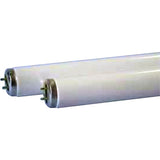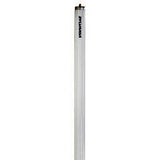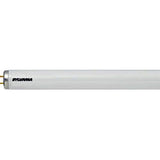Is SAD a Northern Hemisphere Phenomenon? Does It Happen To People in the Southern Hemisphere?
Posted by Nick on for ProLampSales

While summer is fast approaching in the US, Canada, Europe, and the rest of the Northern Hemisphere, the other half of the globe is entering its colder, darker months. And with less sunlight means more risk of being sad and getting SAD, also known as Seasonal Affective Disorder.
SAD was first named in the early 1980s and has become widely recognized as a seasonal mood disorder that is a form of depression. About 70-80% of sufferers are women, and onset of the condition usually begins when someone is in their 30s. The condition may be a remnant of the common animal pattern of hibernating during the cold months. Low temperatures, low mood, and low activity go hand-in-hand.
In the morning, exposure to 20-30 minutes of daylight-quality light (not necessarily sunlight) is a great way to combat SAD. If that is not possible, the first treatment for SAD that is listed by the Mayo Clinic is light therapy. While sitting in front of a 10,000-lux light box for 20 minutes a day was popular a few years ago, until the general lighting industry caught up and has been marketing full spectrum and daylight bulbs to address a lack of natural daylight.
The source of the daylight is not the trick, rather it is getting at least 10,000 lux for 30 minutes per day. While a light box can do this, so can any light bulb that produces strong blue spectrum wavelengths. Any light bulb marketed as "full spectrum" or "daylight" will usually meet this requirement.
However, it should also be noted that simply having full spectrum or daylight bulbs installed in a table lamp or ceiling fixture will not be enough. It is usually not possible to get close enough to the bulbs for long enough, and the bulbs will likely provide less light than a dedicated fixture for light therapy. Additionally, staring at a smartphone screen for 6-8 hours a day is also not a substitute.
If you're familiar with our discussion on color temperature, you will recall that daylight color temperature at noon is 5600K. Therefore, any light bulb with a color temperature of 5000K or higher meets the standard for helping with SAD.
Many light boxes for SAD now come in LED versions, although there are still some linear fluorescent and compact fluorescent options available. While LEDs eliminate most infrared and ultraviolet light, fluorescent will provide some UV and IR, providing a slightly fuller spectrum.
One myth about SAD and light therapy is that neodymium bulbs are an effective treatment. While incandescent bulbs are 2700K, manufacturers make bulbs coated with neodymium, which filters out yellow light, resulting in a light that is whiter and therefore mimics daylight. However, this is not exactly the same as using a full spectrum bulb, or getting actual sunlight. Neodymium bulbs, because they are incandescent, are cheaper than actual full spectrum bulbs but have not been shown to treat seasonal affective disorder.
One of the more interesting aspects of light therapy in regards to treating seasonal affective disorder is that, according to the Can-SAD Study, "Light treatment showed earlier response onset and lower rate of some adverse events relative to fluoxetine, but there were no other significant differences in outcome between light therapy and antidepressant medication." Get an expensive prescription, or purchase a light box that may last decades.
So, if you're enjoying your summer with a vacation to the Southern Hemisphere, and all the natives seem a little restless (literally), don't blame it on them. Remember, it's winter in their tropical paradise. Just hand them a full spectrum bulb.
- Posted in Health
Featured Products (View All)
0 Comments



